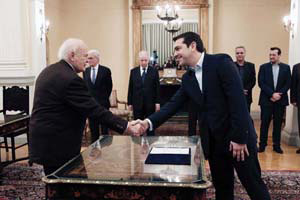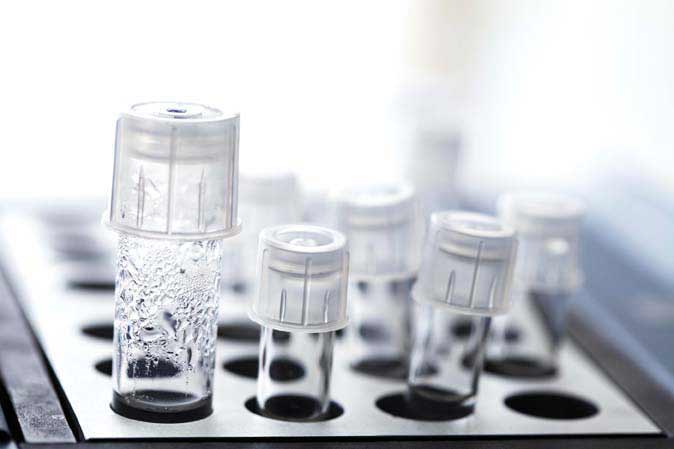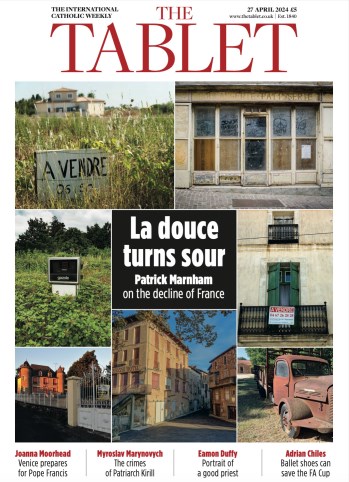Church authorities’ moral objection to the proposed legislation permitting the use of the DNA of a female donor to enable a couple to avoid having a genetically disabled child raises several ethical issues. Underlying the objection of the Church lies its long stop, or default, argument which condemns all developments in artificial human reproduction, including in vitro fertilisation (IVF), since they depend on experimentation on early human embryos involving their destruction, in spite of their life being sacrosanct from the time of conception.
Such a consideration, however, should not preclude examining the other arguments which are currently directed specifically against the development of three-parent childbirth, if only for the sake of offering ethical analysis to those who do not accept the Catholic position on the inviolability of the early human embryo, considering it, for instance, to be live human tissue but not yet sufficiently formed to constitute an ensouled individual person.
At its simplest, the process of three-parent childbirth can be described as the use of genetic material from a donor to replace harmful material in a woman’s egg before conception occurs; and although the Church, in the days of Pope Pius XII, morally disapproved of transplanting organs between the living (inter vivos), on the grounds that it involved self-mutilation on the part of the donor, few people would now accept that extremely partial analysis as an adequate description of what many rightly view as an act of human solidarity.
There is, of course, more to the debate than that. One of the objections to what would be a novel way of ensuring the birth of a healthy child from a mother suffering from a mitochondrial defect is that the proposed legislation is premature, since there has not been sufficient scientific study of the procedure to warrant passing permissive legislation. This argument is challenged, however, by scientists who have been closely involved in developing the technique; and, in any case, this dispute is more a matter of establishing the facts and questioning the timing than one of considering the ethical nature of the procedure envisaged.
Like many medical advances, three-parent childbirth encounters the so-called “slippery slope” objection, the question, “Where will it end?” implying the answer, “In inevitable disaster”. What this objection does not appreciate is that we actually spend much of our lives on slippery slopes. The Greeks were well aware of this when they inscribed above the temple of Apollo at Delphi the maxim, meden agan, “Nothing in excess”; or more popularly, “Don’t overdo it”. On slippery slopes, Dame Mary Warnock once observed, whether you can keep your footing or not depends on whether you are wearing skis or crampons.
The question then is here, how, once we begin with genetic transplants, we can prevent ourselves from proceeding inexorably to a genetic apocalypse. For the prospect of applying new procedures in genetic medicine raises for some people the horrendous spectre of eugenics, with its aspiration to sculpt future humanity by tailoring its genetic composition in line with the popular or political fashions of the day. It is clear enough that eugenics is the ideological wing of genetic medicine, yet it need not be the case that the wish to prevent an individual, or even the human gene pool, from suffering a particular genetic malady will inevitably usher humanity into Aldous Huxley’s Brave New World. In order to identify slippery slopes here, it is helpful to make two distinctions: between negative and positive genetic medicine; and between somatic and germ line genetic medicine.
Negative, or preventive, genetic medicine is undertaken to remedy or to prevent a faulty situation by opposing and eliminating various genetic diseases from an individual, or eventually from the human gene pool. On the other hand, positive genetic medicine, or genetic enhancement, proposes to improve the individual, or the human blueprint, by inserting genes which are judged personally or socially advantageous. Again, when genetic medicine is applied for an individual’s sake, it is termed somatic therapy; whereas germ line therapy introduces genetic changes in the reproductive system which will eventually be transmitted to the patient’s offspring and continue through succeeding generations.
Few people will morally object to negative or therapeutic intervention, and even to preventive germ line therapy; but many are deeply unhappy about any form of positive, or enhancing, somatic treatment, and are even more unhappy about positive germ line procedures which aim to change the human genome permanently for the better. Given all this, it is not difficult to see what lies behind the 1979 recommendation by the World Council of Churches, of “opposing genetic engineering … for purposes other than the correction of genetic defects,” that is, morally approving only negative genetic treatment.
Another consideration invoked against having recourse to three-party parenthood arises from the putative effects which genetic material obtained from the third party might have on a developing embryo and on its future life and behaviour, as well as on its own eventual progeny a generation later. There is authoritative testimony from Lord (Robert) Winston that “unlike ordinary, nuclear DNA, this mitochondrial DNA does not pass on any personal attributes” (The Daily Telegraph, 2 February).
Among those who would question or disagree with this, it appears that underlying much of the uneasiness aroused by the prospect of introducing or substituting genes may be what almost amounts to a belief in genetic determinism affecting the make-up and behaviour of individuals – the view that humans are simply the product of their genes, now including someone else’s, and that their personality and behaviour are determined by their genetic make-up, leaving little, if any, room for personal freedom of choice and self-determination on the part of the individual. Richard Dawkins’ myth of the “selfish gene” pointed in this direction.
Yet we are each much more than a mere kaleidoscope of genes, especially if considered from a religious point of view. Christians, at least, believe that human behaviour cannot be explained in exclusively determinist terms. Of course, we can be strongly influenced in our behaviour by hereditary, as well as environmental, economic and unconscious factors. But being predisposed is not the same as being predetermined. Many an individual’s ability to rise above, or to go against, harmful circumstances in which they may find themselves, is at once an indication of their innate freedom, and evidence of an interior source of being and action which cannot be explained simplistically and without remainder in terms of their genetic identity.
Again, identical twins have almost the same DNA, but studies show how, as well as occasional uncanny similarities, they can also be capable of views and behaviour which are completely disparate. We really seem to have nothing much to fear from genetic medicine for its impact on our personal identity and individuality, any more than from receiving another person’s kidney or heart.
Finally, against the proposal for creating so-called three-parent offspring through genetic medicine, we are bound to have to deal with the hoary objection that such behaviour is “playing at God” in usurping the divine will. In fact, from a Christian point of view, in developing medical innovations we are not playing at being God; rather, we are accepting the divine invitation, or even mission, to use our God-given intelligence and other human talents to continue God’s creative work by caring for God’s needy human creatures.
Thomas Aquinas once observed strikingly that human beings are unique among God’s creatures in actually being given a share in God’s own providence, being able to take steps to provide, or “foresee”, for themselves and for others. In its turn, the Second Vatican Council, in its Pastoral Constitution on the Church in the Modern World, no. 34, taught that “far from thinking that works produced by humanity’s own talent and energy are in opposition to God’s power, and that the rational creature exists as a kind of rival to the creator, Christians are convinced that the triumphs of the human race are a sign of God’s greatness and the flowering of God’s own mysterious design”.
What we have been considering ethically here is the principle of having recourse to transplanting genetic material from a donor to a potential mother in order to prevent the mother from transmitting a mitochondrial disease to her children; and our ethical analysis seems to indicate the inadequacy of the arguments which are being marshalled to oppose this principle. The means that we have had in mind to achieve this desirable end is the comparatively simple procedure of removing the nucleus from the potential mother’s egg which contains unhealthy mitochondria, and placing it into a donor egg which has healthy mitochondria.
A more complex and less used alternative means on offer involves using the father’s sperm to fertilise two eggs, one from the future mother and the other from a donor, and performing the therapeutic transplant between the two resulting embryos, with the result that one of them is then disposed of once it has served its purpose.
Those who hold to the moral position maintained by the Church of respecting the integrity of the human embryo from the time of its conception will have very serious reservations about using this less common method, whose success involves the destruction of a human embryo. It is therefore in the interests of respecting this view, as well as of finding the widest possible approval and support for the principle of genetic transplantation, to concentrate attention and practice on the earlier means mentioned, that of starting from two eggs, rather than creating two embryos and discarding one.
It is considerations such as those that we have been examining here that could lead us to take a cool but sympathetic look at modern medical developments, including those affecting human reproduction, and to admire and welcome whenever possible the steps being offered to prevent personal and family tragedies.
Jack Mahoney SJ is emeritus professor of moral and social theology at London University and the author of Bioethics and Belief: religion and medicine in dialogue.
05 February 2015, The Tablet
Where’s the harm?
Ethics of mitochondrial donation
La douce turns sour
 Loading ...
Loading ...
Get Instant Access
Subscribe to The Tablet for just £7.99
Subscribe today to take advantage of our introductory offers and enjoy 30 days' access for just £7.99





What do you think?
You can post as a subscriber user...
User Comments (4)
To underestimate the scientific risks involved in this highly controversial proposal is lamentable and hugely unfair to the women who carry mitochondrial disease. Let me quote briefly from Prof Stuart Newman, of New York Medical School, a world renowned secular scientist with considerably more scientific knowledge of the proposed technology than Father Mahoney.'
'A prospective child made by MST or PNT would be the result of an evolutionarily unprecedented experiment with known, or easily anticipated, hazards. Juxtapose this against the fact that the biological identity and long-term health of the three biological parents undertaking MST or PNT are not directly at risk in the procedures. It is, therefore, entirely unwarranted to make their perspective (or more specifically that of the nuclear gene donor) the one from which the procedure is judged, thereby allowing the techniques to be characterized as being of minimal impact. Rather, the perspective of the individual brought into being by the procedures should be paramount. Combining fragments of two damaged eggs to produce a human embryo is, despite the rhetoric of mitochondrial "transfer" or "replacement," large-scale manipulation of nuclear genes. Its backdoor admittance to the repertoire of assisted reproduction techniques in the guise of being a trivial tweak bodes ill for future attempts to regulate gene transfer methods for any other purpose.' (The Huffington Post)
First do not harm as the wise saying goes.
Interesting article on mitochondrial transfer. The comments afterwards are worth reading too.
I have a personal involvement with this issue.
My step-great-grandson is seriously affected by a major mitochondrial problem which will result in early death after treatment over his whole life, among which is the necessity for his mother to insert a tube through his nose so that he can receive nourishment. He hates it. He is four years old this month, a beautiful and very clever child who gives great pleasure to the whole family. He could have been with us all for a full life but the prognosis is accelerating deterioration through many painful periods before an early death. (Pearson Syndrome)
I think many people are not aware that naturally many fertilized embryos do not progress further than a week or so after fertilization before being rejected in 'a late period', in fact before pretty well anyone is aware that conception has taken place.
To remove a gene which acts as an engine to making other genes work seems a sensible thing to do without offending the creator. Jesus always asked for help in his miracles from us and God gave us the brains to help in our small way.
I might protest against the proposed practice on the grounds of safety if there were a way to discover them and that is the real problem, is it not?
Father Mahoney's logic is flawed. To believe that genes (or genetic mismatches) are important in inheritance and health is not to believe in genetic determinism. For example, if a person is homozygous for the sickle cell trait, he or she almost certainly will develop sickle cell disease. It is not being genetically deterministic to say this. In a similar way, we can say that the mismatch caused by infusing mitochondrial DNA from a source other than the genetic mother into a zygote might cause health problems for the individual. To say this is not to be genetically deterministic; it is simply acknowledging scientific fact. The mitochondrion and the nucleus of the cell work hand-in-hand to help bring about the functioning of the whole cell, and many of the proteins that work in mitochondria are encoded by genes the nucleus (the proteins are imported into the mitochondrion). The two organelles--nucleus and mitochondrion--work together. Studies in animals have suggested that having mitochondria from a different person altogether (the third parent) can cause serious incompatibilities that can lead to health problems for the individual. Thus, there are issues of safety. These issues have not been resolved. Being concerned about them is decidedly not being genetically deterministic. It is just using common sense based on the information available.